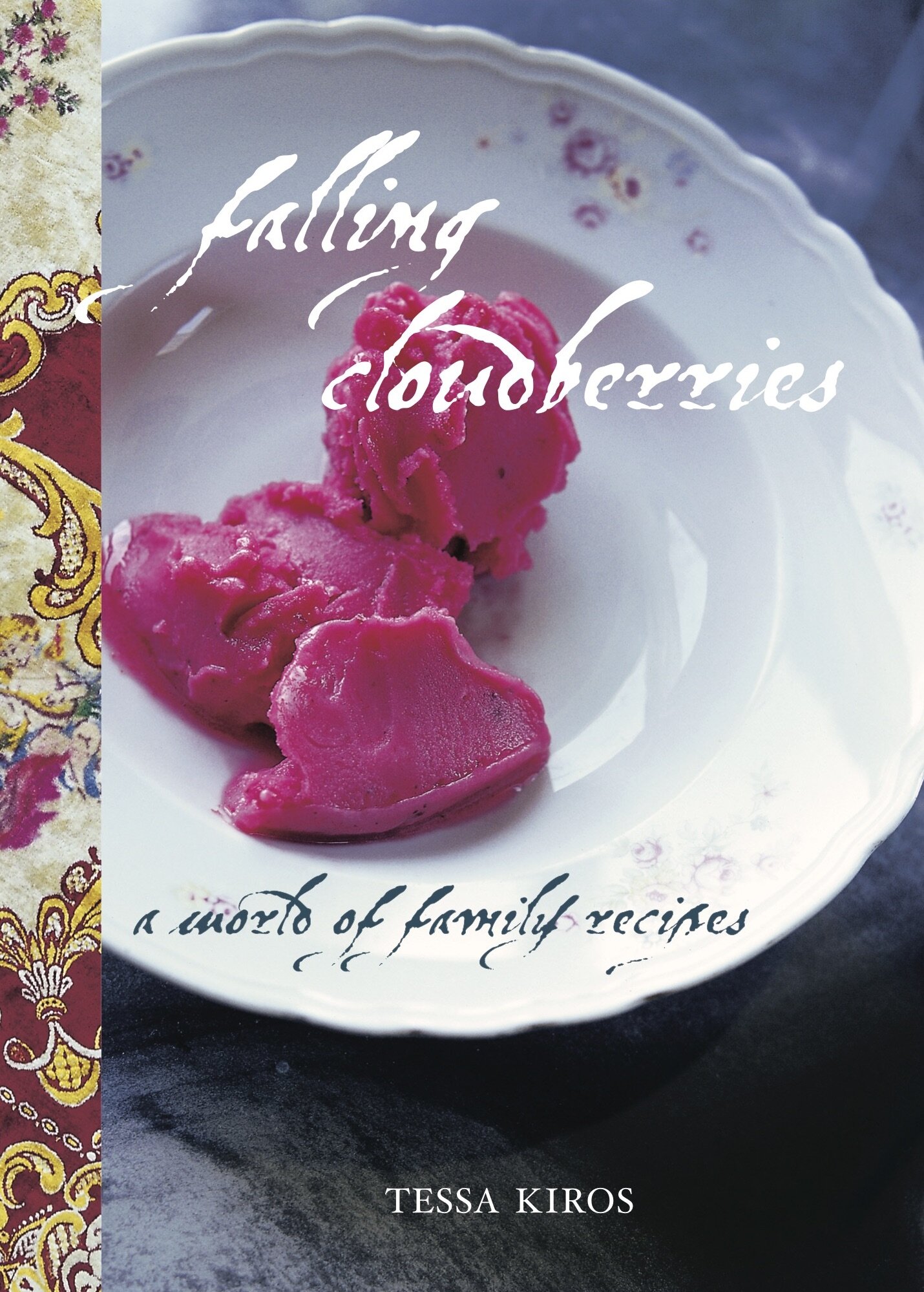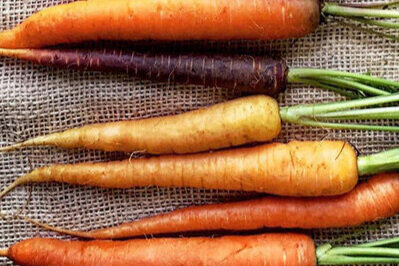Advertisement
Author Profile: Q&A with Tessa Kiros
25 August 2021 · Author Profile
“A cookbook should be something that gives people inspiration.”
Interview: Susan Low; photographs: Manos Chatzikonstantis
Tessa Kiros may just have been destined to be a food writer. She was born in London to a Finnish mother and a Greek-Cypriot father, and the family moved to South Africa when she was 4. When she was 18, Tessa gave in to raging wanderlust and set out to travel and learn about food, culture and food traditions around the world.
She spent time in London (where she cooked at The Groucho Club), Sydney, Athens, and Mexico, studied sociology and anthropology, and now lives in Tuscany between Florence and Siena with her husband Giovanni and their daughters Yasmine and Cassia.
Tessa’s first book, Twelve, was published in 2003, followed by Falling Cloudberries in 2004, which won a Golden Ladle Award at the World Food Media Awards in 2005. She has written nine cookbooks to date, several of which are available in full to ckbk members. Her books are notable for their beautiful photography, their lyrical writing, and the way she juxtaposes food memories with personal stories, and intermingles it all with luscious recipes. Kiros’s work has been hugely influential on cookbook content and design, and food writer John Gregory Smith says that reading Falling Cloudberries “Made me want to become a food writer”.
Tessa talked to ckbk about her influences and inspiration, from the Famous Five to Elizabeth David.
Q: Tell me a bit about where you grew up, and how you become interested in food. How and where did you learn to cook?
I was born in Hampstead in London, then moved to Golders Green. My parents met there when they were studying. My mum came from Finland, my father is Greek-Cypriot, and they went to London to study and work. They met, married, and my sister and I were both born in London. Then they decided, on a whim – “Let’s go live in South Africa.” They’d never been.
I have a brother who was born in South Africa, and we went to school there. I went to a Greek high school in Johannesburg, so we were very mixed culturally. I finished school and just knew that I wanted to travel. I did a university degree in sociology and anthropology by correspondence – so that’s my leaning. Anthropology, travel, and the people of a place – that’s the part that I love most.
Q: Did you train as a chef or learn on the job?
I learned on the job. I was waitressing in London while I was studying for my degree – I was working by night at a restaurant in Chelsea, in London (called the Wilds), studying by day. The chef was Angela Dwyer, who’s now at Peak Restaurant in Wales, and she was amazing. I went back to South Africa for a while and called her and said, “Look, I’d really like to work with you in the kitchen.” And she said “Come.” So I did.
I ended up working at the Groucho Club when Angela was chef there, and then I worked at 192 restaurant in Portobello in London. I went travelling for a bit and worked in Sydney, in Athens… And then I came to Italy to learn about the food. And I met my husband Giovanni, and 22 years later I’m still here. We live in the Tuscan countryside between Florence and Siena and have two daughters, Yasmine and Cassia.
Q: Did you plan to become a food writer or did it just happen?
It happened. That’s just generally my philosophy in life, to just go with the flow, and don’t push it. I’m actually happier like that.
My first book, Twelve, was not intended to be a book at the beginning. I was collecting the recipes just for me. I was new in Tuscany – and when you are in new place, that’s when your antennae are the most active, and I thought I probably wouldn’t be in Tuscany forever.
Then I thought, “Hey, why don’t I make it into a book?” and I asked a couple of my friends for help. The stylist, Michail Touros, is a friend from birth, the graphic artist is a friend of mine who lives in Canada, the stylist found me the photographer, Manos Chatzikonstantis – and so it became a book. It was originally self-published [and later published by Murdoch Books]. And we’ve just carried on. It is a lovely way to work.
Q: Your second, Falling Cloudberries, is one of my favorite books. As with your others, you get across what a place looks and feel like. Reading them, they take you to a different place. Is that what you were aiming for?
Many people have told me that that book inspired them, and that’s one of the best things you can hear as an author. It’s a wonderful compliment. I think people relate to it because of its rich mixture – and it wasn’t meant to be like that. I just collected recipes from my childhood, and from everything that that I’d learned, and it just came together. My upbringing, my heritage – I think that people can relate to that.
Q: It’s a very personal book. How did you feel about writing about yourself and your life and your family in such a personal way?
Well, I think it’s lovely to be able to give things to people. A cookbook should be something that gives people inspiration, either from a photograph, or a color, or a recipe that jogs their memory. If you know that you have something to give somebody, give it.
Q: Your books have the ability to transport people. How important is the sense of place to you and your writing?
People have been writing to me recently about my latest book, Provence to Pondicherry, because they haven’t been able travel, so they can travel with this book. Before I started working on that book, someone asked me if I really needed to go to the places, or could I just research it online. I said, “Absolutely not!” For me it’s about connecting with the people, and understanding why they do what they do.
That’s what Twelve was about too. It’s about what Italians eat in a calendar year, about things that are so obvious to people who live here that they don’t even see it. People eat with the seasons – and when I came to Italy that really struck me.
Q: To what extent is it possible to explore a country’s culture through its recipes?
I think it’s very deep, that. I always think, “How does a culture get to that particular recipe? Are there things that they make for Christmas, or for Easter, that spring from their religious beliefs, and which recipes are passed down from their ancestors?” That’s why I’m very much for preserving recipes from grandmothers. Obviously we can evolve them to suit ourselves today – but it’s so connected with the place.
A culture makes the recipe. The most obvious thing is what can be grown in the surroundings. In Finland, where my mother is from, they have salmon, which provides vitamins. In Italy, they use olive oil. The sun and the earth is what gives you the raw ingredients.
The character of the people is what makes the dish. Introvert nations may eat inside and have big pots of food and singular portions of food. The Greeks will be outside on their balconies, sharing plates in the sunshine. There are so many different aspects of a culture.
Q: Which recipes from your books that stand out, the ones that people shouldn’t miss?
In Falling Cloudberries, the most talked-about recipe is Leg of Lamb with Oregano and Lemon. It’s so Greek, and the lamb is cooked forever. And my grandfather’s Fried Chips & Artichoke Bottoms – and the Filo Millefeuille with Oranges. Also My mother’s Gravadlax with Dill Cucumbers, Finnish Meatballs with Allspice, Pork Fillet in Pastry with Mushrooms – these are all things I crave.
There’s a nice Plum Cake in Twelve that I haven’t made for ages. Chickpea, Feta & Coriander Salad. The Moussaka is amazing. These are flavors from my childhood.
Q: Which food writers have most inspired your work?
The people who come to mind are Elizabeth David and Claudia Roden, and the book is Patience Gray’s Honey From a Weed. That kind of food writing is what inspires me the most, because it’s deep. It transports me with words.
But I was also inspired by the Famous Five books. I always wanted to have ginger cake in a tin, or orangeade, or whatever they were having. That, for me, was inspiration. And, when I got older, I loved [Laura Esquivel’s] Like Water for Chocolate. When I read that book I thought, “I need to go to Mexico.” When inspiration touches you in your heart, in your stomach, you know it.
Q: How would you sum up your cooking style?
I always think, “Who do I need to feed, and what is the aim of what I’m doing?” The aim is to try to be healthy nowadays. And it needs to be relevant, too.
I’m working on a file for a new book – and when it’s ready, it will be ready. At this point in my career, I can afford to say that, and not be under any pressure. I’m keeping away from too many cakes and sugar, exploring healthier food at the moment. I love Indian food, and I’m really interested in Ayurveda.
Q: So, you are working on a new book. Can you tell us about it?
I’m collecting things that I love. I’m keeping my ears open and my antennae up. I’m writing things down, and testing things out, and when I feel that it’s at a nice point, then I will offer it.
Q: Do you have a cooking philosophy?
Whatever makes you feel good, go with it. I think going back to a good, old-fashioned plate of spaghetti with tomatoes is one of the best things on the planet. And simplicity. Food tasting as it should taste is amazing, and that’s what the food in Tuscany is about.
Interview edited for length and clarity.
You can find every recipe from all five of Tessa’s books on ckbk, in full. See Tessa’s collection (previewed below) for a selection of the author’s favorite recipes from her books.
Tessa’s recipe recommendations
Sign up for ckbk's weekly email newsletter
Read more about ckbk authors
Advertisement









